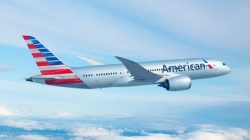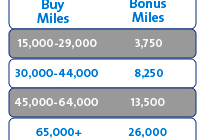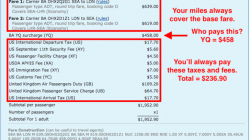Tahsir was one of the first to report the recent changes to the American Airlines AAdvantage program. I’ve merely sat back, amused, and read others’ commentary for the last two days. But I haven’t seen many happy faces. Dan’s Deals called it a “mAAsacre.” (Hey, it’s AA’s fault for incorporating the double-A into its branding.)
The biggest complaint is with the lack of notice — something I agree with. However, I also try not to linger on the past. Several key features of the AAdvantage program were great while they lasted. It was well understood that they were probably a little too good. And so, while maybe American Airlines ought to be kind enough to provide warning before it makes changes, at the same time we all sort of knew these changes were coming. Especially since they recently merged with US Airways and there had to be some kind of reconciliation between their two loyalty programs.
Gary Leff put it very well in the title of one of his posts: “…Changes to…Awards You Probably Don’t Ever Book,” though this does not refer to all of the changes implemented.
As someone who just recently moved to the American Airlines program, I only have a few hundred thousand miles in my account and not a lot invested with the carrier. I realize I’m probably not the best authority when it comes to expressing feelings of victimization.
But on the whole I don’t see a reason to abandon American AAdvantage — a conclusion I ultimately reached after several years with United MileagePlus. Whereas MileagePlus decided I need to spend a certain amount to earn my status and made it more difficult to fly on premium partner airlines, American hasn’t done this. Instead, American has cut back on some areas where it was more generous than its competitors. Perhaps, in a few areas, it has cut a little further still.
Switching topics to US Airways Dividend Miles (since the two will eventually be merged), it’s true that the business class award from the U.S. to North Asia has become less sweet, moving from 90,000 to 110,000 miles. It’s still possible to book Cathay Pacific for those 110,000 miles, and Cathay Pacific has a lot of award availability. If you want to fly on Singapore Airlines using United miles (just as far as Hong Kong), you need 160,000 miles in business class, you have a snowball’s chance in hell of finding award space, and United won’t even display that space on its website. (American doesn’t display Cathay space, either, but for United this is worth noting since it displays almost every other partner.)
So if my goal was to fly to Hong Kong, which airline’s loyalty program would I choose? American/US Airways. Without a doubt. And for many other routes it continues to have a valuable award chart. Even Lucky says that he’d continue to buy US Airways miles.
I can’t book stopovers anymore with AA, but I was never a particular fan of free one-ways for my own uses and generally prefer simple round-trip awards with direct routings. So I’m not losing there, and neither — I suspect — will the majority of people. I was looking forward to booking an Explorer award at some point, but I think I can tolerate the loss. It may turn out to be easier to rely on a mix of awards booked through different programs if I ever decide to take a round-the-world trip.
In terms of benefits, one of the most notable changes was the reduction in the free baggage benefit. Full-fare and AAnytime award tickets will lose their complimentary checked bags, and there will be a reduction in the number of checked bags for mid-tier elites in each program, but these losses aren’t necessarily putting American at a disadvantage to their competition. In fact, US Airways’ elites are getting some reasonable improvements as far as in-cabin amenities go, which might matter more to frequent travelers who tend to avoid checking bags.
The new prices for the AAnytime awards will be particularly interesting. There will be three different prices for these awards that give access to the last seat available — something United doesn’t even offer anymore to all its customers. But those prices will vary only according to date.
Contrast that with Delta, which is implementing a five-tier award chart. One could argue that five tiers is just another way to find-tune the price of last-seat availability while ensuring that no one can predict that price. With American, you will be able to predict it. And since some dates will be lower and others higher than the current AAnytime award prices for some routes, they average out most of the year. It only becomes an issue for a few specific dates when, previously, US Airways wouldn’t let you book them at all.
As I said, I’m probably the wrong person to ask about this, which is why I did not rush to write any posts when the changes were first announced. I only recently chose to switch to American Airlines from another carrier and suspected there would be some bumps along the road. I don’t at all agree with the lack of notice on these changes. United — and even Delta — have tended to provide plenty of notice for the majority of their changes.
If I were completely unfamiliar with the old American Airlines, would I still choose the new one? You bet. I think American AAdvantage remains a strong competitor among the major U.S. carriers. Let’s just hope these are the most disruptive of changes and not a small sign of big things to come.





